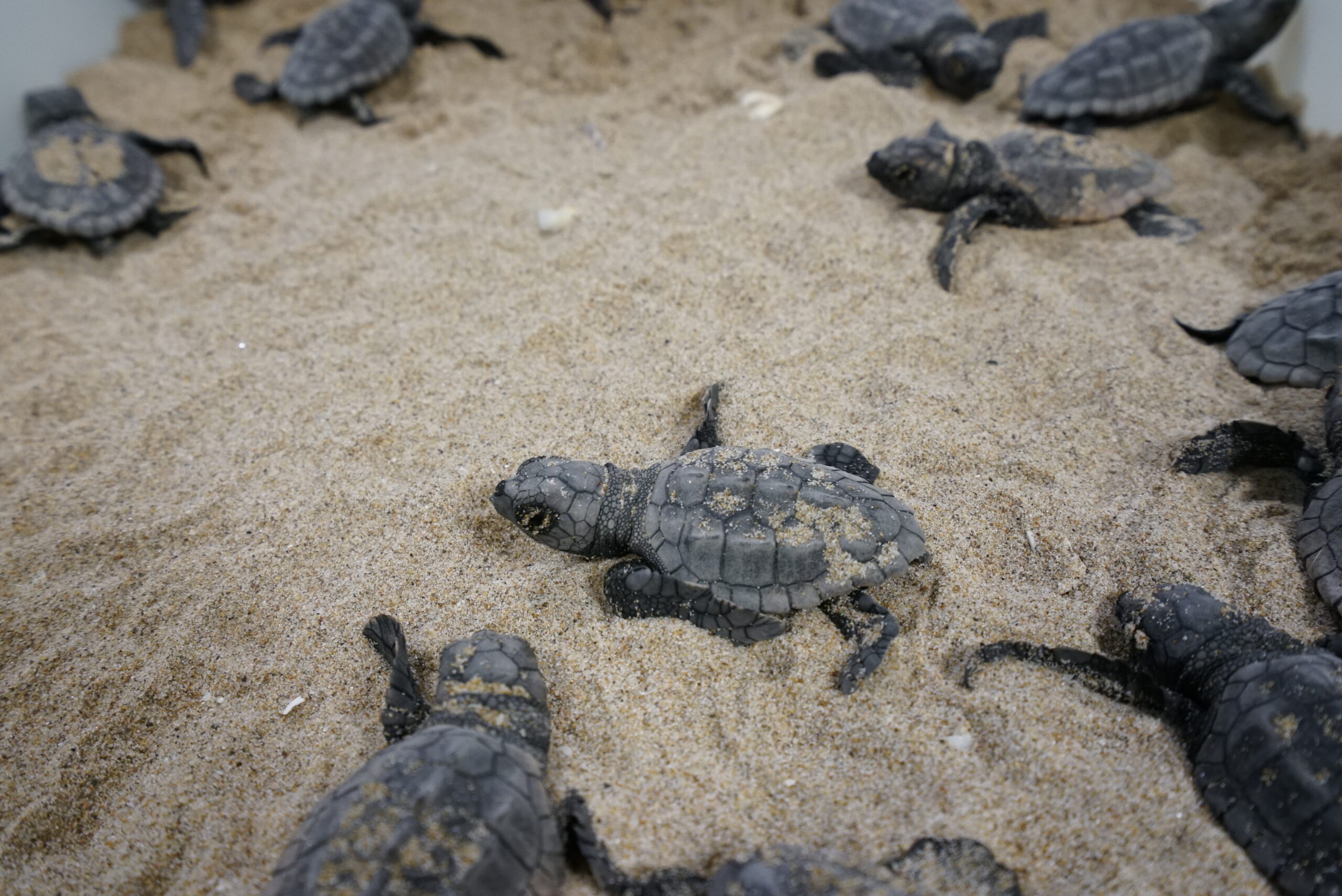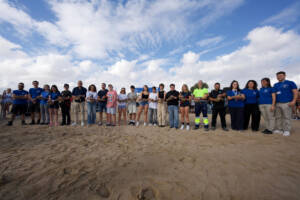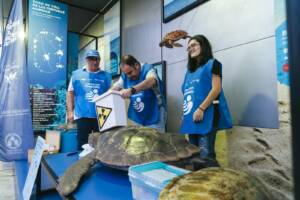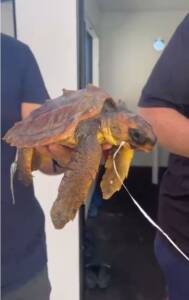- The Oceanogràfic Foundation has cared for and prepared 16 turtles for their return to the marine world.
- The “Head Starting” program increases the chances of survival for hatchlings.
- A satellite device will allow us to know the route of these animals.
Valencia, August 9, 2017
A year ago, the sea turtles were born from the nesting carried out in Sueca.
Now, a year later, and after having been in the ARCA del Mar of the Oceanogràfic of Valencia for all this time receiving constant care from biologists, veterinarians and caretakers, they are ready to make their trip back to the sea.
These turtles have been immersed in a conservation program of the Oceanogràfic Foundation, called “Head Starting”. José Luis Crespo, head of the Arca del Mar, explains that “The purpose of this program is to ensure that newborns reach sufficient size, weight and swimming, diving and feeding skills to increase the chances of survival in the open sea, while also avoiding a large part of the predators.”
To do this, during the last months of the project they are provided with food as similar as possible to what they will find in the sea, such as jellyfish and other invertebrates, complementing their daily diet based on algae gelatin, fish and cephalopods, to enhance their hunting instinct.
The turtles, which were born with 18 grams of weight and 4 cm in length, now weigh 1.5 kg and measure 18 cm, these measures being considered adequate for their reincorporation into life in open waters, to which they will be released in Torrevieja and Sueca this September.
Tracking the turtles
Another benefit of protecting turtles during the first months of life is that, thanks to the size reached, some of the turtles will be tracked via satellite by scientists, thanks to a device powered by solar energy that will be placed on their shell, to better understand what areas are important for the beginning of their life in the sea.
This data will serve to improve the recovery, protection and conservation of the species. A team formed by technicians from the Polytechnic University of Valencia, University of Valencia, Conselleria de Medio Ambiente and the Oceanogràfic Foundation will follow the little turtles for at least the three or four months that the satellite allows.
How the turtle eggs were found
A year ago, some young people detected a loggerhead turtle Caretta caretta specimen leaving the sea and advancing through the sand of Les Palmeretes beach in Sueca in the middle of a summer night. After making a call to 112 to report the situation of the animal, they received advice from the technicians of the Stranding Network, composed of the Conselleria de Agricultura, Medio Ambiente, Cambio Climático y Desarrollo Rural, the Oceanogràfic of Valencia and the University of Valencia. Among them, not to disturb the animal, provide tranquility, and avoid lights and flashes.
They did so and allowed the turtle to lay 88 eggs on the beach. The staff of the Stranding Network arrived in time to ring the turtle and take biological samples before it continued its course to the sea. In addition, 71 of the eggs were translocated to the protected area of El Saler, in Valencia, a less crowded beach area. There the nest was guarded by volunteers day and night until they hatched on September 5, 2016. After making the imprint on that beach, they moved to the Oceanogràfic, where the veterinarians carried out their health status control as well as the biometric measurements.
Simultaneously, 17 of the turtle eggs were taken to the Oceanogràfic laboratory to keep them in a temperature-controlled incubator.
To conserve the natural cycle of the animals, some little turtles were released on the beach where they were deposited by their mother, with the hope that all the animals that are females, return in their adult stage to lay eggs on that beach.
About ARCA del MAR
The Oceanogràfic of the Ciutat de les Arts i les Ciències has since 2007 one of the most modern and largest facilities in the Mediterranean specially designed for the reception and recovery of sea turtles and dolphins. This center stands out for being the largest in Spain and one of the largest in Europe for the care and rehabilitation of these reptiles.
The ARCA del Mar collaborates regularly with the Conselleria de Medio Ambiente and more than 70 institutions including Official Centers, Universities, NGOs, Research laboratories and private companies to help in the rehabilitation processes of threatened marine species, which appear periodically injured or sick on the Valencian coast.




